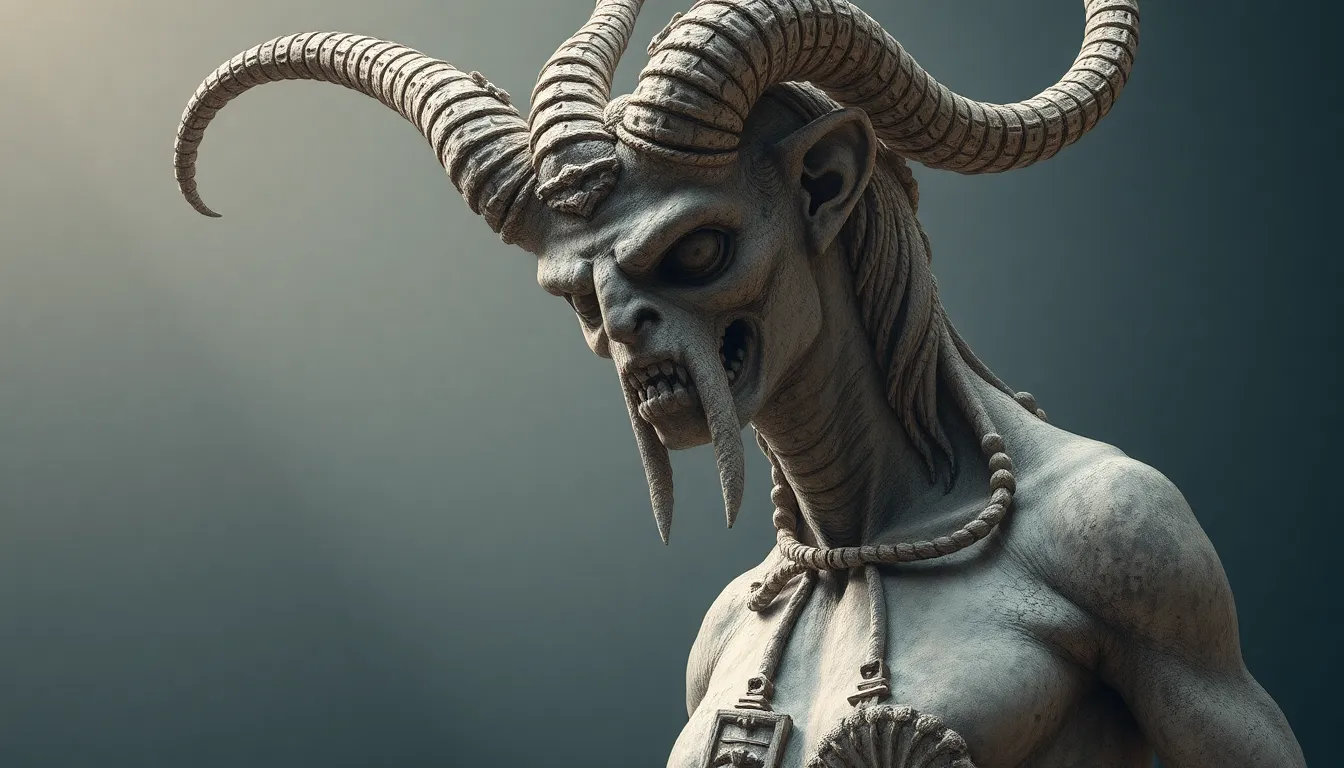The Gorgon’s Gaze: Understanding the Myth of Petrification
I. Introduction to the Gorgon Myth
The Gorgon myth is one of the most intriguing tales in Greek mythology, capturing the imagination of many through its themes of fear, transformation, and power. Gorgons are typically depicted as fearsome female creatures with snakes for hair and a gaze that turns onlookers to stone. This myth has fascinated scholars and artists alike for centuries.
Petrification, the act of turning to stone, serves as a powerful symbol within these myths. It represents not only the physical transformation but also psychological and emotional states that resonate deeply with human experiences. In this article, we will explore the Gorgon myth, its origins, meanings, and the lasting impact it has had on art, literature, and culture.
II. Origins of the Gorgon Myth
The origins of the Gorgon myth can be traced back to ancient Greece, where they were first mentioned in the works of poets like Hesiod and Homer. Gorgons were often described as daughters of the sea deities, embodying the chaotic forces of nature.
- Key figures: The most famous Gorgons are Medusa, Stheno, and Euryale.
- Medusa: The only mortal among the three, her beauty was unparalleled until she was cursed by Athena.
- Stheno and Euryale: Immortal sisters who, unlike Medusa, were never subject to the curse.
Over time, the myth evolved across various cultures, manifesting in different forms and interpretations. In some versions, Gorgons were seen as protectors, while in others, they were viewed solely as monsters to be vanquished.
III. The Symbolism of Petrification
The Gorgon’s gaze symbolizes profound themes of fear and power. To look upon a Gorgon meant facing one’s deepest terrors, and the resulting petrification can be seen as a metaphor for being overwhelmed by fear.
- Fear and power: The psychological impact of the Gorgon’s gaze reflects the power dynamics between the observer and the observed.
- Transformation and permanence: Petrification represents a permanent state of being, suggesting the irreversible nature of certain experiences.
- Connections to human emotions: The myth resonates with societal fears of the unknown, transformation, and the loss of agency.
IV. The Gorgon in Art and Literature
The Gorgon myth has inspired countless artistic representations throughout history. In ancient Greece, Gorgons were depicted on pottery, temples, and mosaics, often illustrating their terrifying visage as a protective symbol.
- Depictions in ancient Greek art: Gorgons were often portrayed with their snake-haired heads and glaring eyes, instilling fear and reverence.
- The Gorgon in classical literature: Poets like Ovid immortalized Medusa’s story, exploring themes of beauty, transformation, and tragedy.
- Modern interpretations: Today, Gorgons appear in films, novels, and graphic novels, often reimagined to reflect contemporary societal issues.
V. The Science of Petrification: Myth vs. Reality
While petrification in mythology implies a magical transformation, there are scientific processes that mimic this phenomenon. In geology, petrification refers to the process where organic material is turned into stone through mineralization.
- Understanding petrification in a scientific context: In nature, fossilization is a complex process involving the replacement of organic material with minerals.
- Comparison with mythological petrification: While mythological petrification is instantaneous and often a curse, geological petrification takes thousands of years.
- Cultural interpretations: The idea of transformation and preservation is prevalent in many cultures, often symbolizing the passage of time and the permanence of memory.
VI. The Role of the Hero in Gorgon Myths
The hero’s journey is central to the Gorgon myth, particularly in the story of Perseus. His quest to defeat Medusa not only showcases heroism but also highlights the importance of courage and ingenuity in the face of danger.
- Perseus and the quest: Armed with gifts from the gods, Perseus exemplifies the archetypal hero who confronts fearsome challenges.
- The hero’s journey: This narrative framework emphasizes growth, self-discovery, and the triumph of good over evil.
- Lessons learned: The confrontation with the Gorgon teaches valuable lessons about bravery, resourcefulness, and the importance of facing one’s fears.
VII. The Gorgon as a Feminine Archetype
The Gorgon myth also serves as a rich source for examining gender roles and the representation of women in mythology. Medusa, in particular, embodies the duality of beauty and monstrosity.
- Examination of gender roles: The Gorgon reflects societal fears of empowered women, often representing a threat to patriarchal norms.
- The duality of beauty and monstrosity: Medusa’s transformation from a beautiful maiden to a monster highlights the complexities of female identity.
- Feminist interpretations: Modern readings often view the Gorgon as a symbol of female rage and empowerment, challenging traditional narratives.
VIII. Conclusion: The Enduring Legacy of the Gorgon’s Gaze
The Gorgon myth remains relevant in contemporary society, serving as a metaphor for the fears and transformations we face in our lives. As a symbol of both terror and power, the Gorgon continues to resonate with audiences across cultures and generations.
In conclusion, the Gorgon’s gaze is not merely a tale of monsters and heroes; it is a rich narrative that explores the depths of human emotion, societal fears, and the transformative power of myth. The enduring legacy of the Gorgon speaks to the vital role that storytelling plays in shaping our understanding of ourselves and the world around us.




